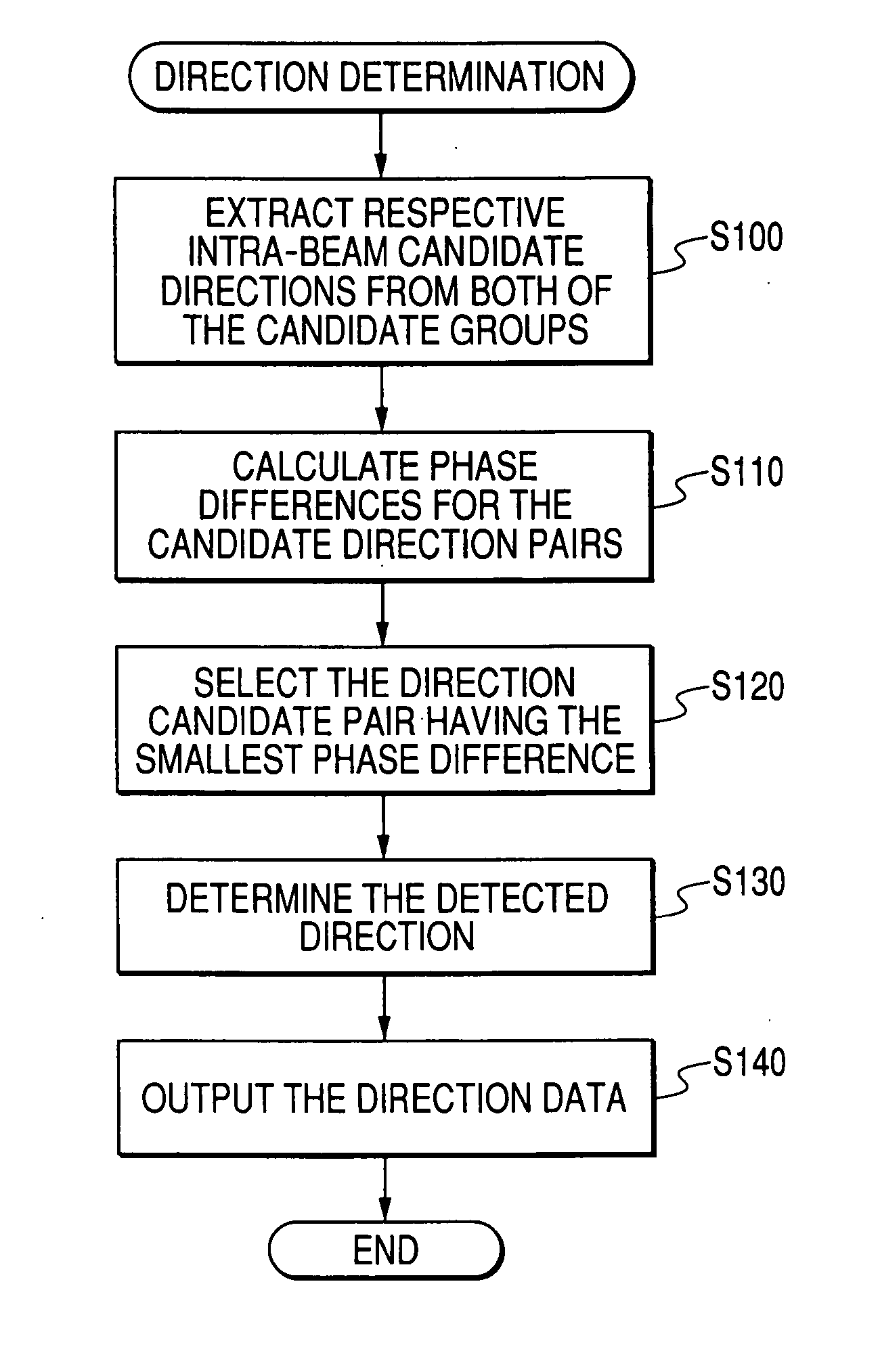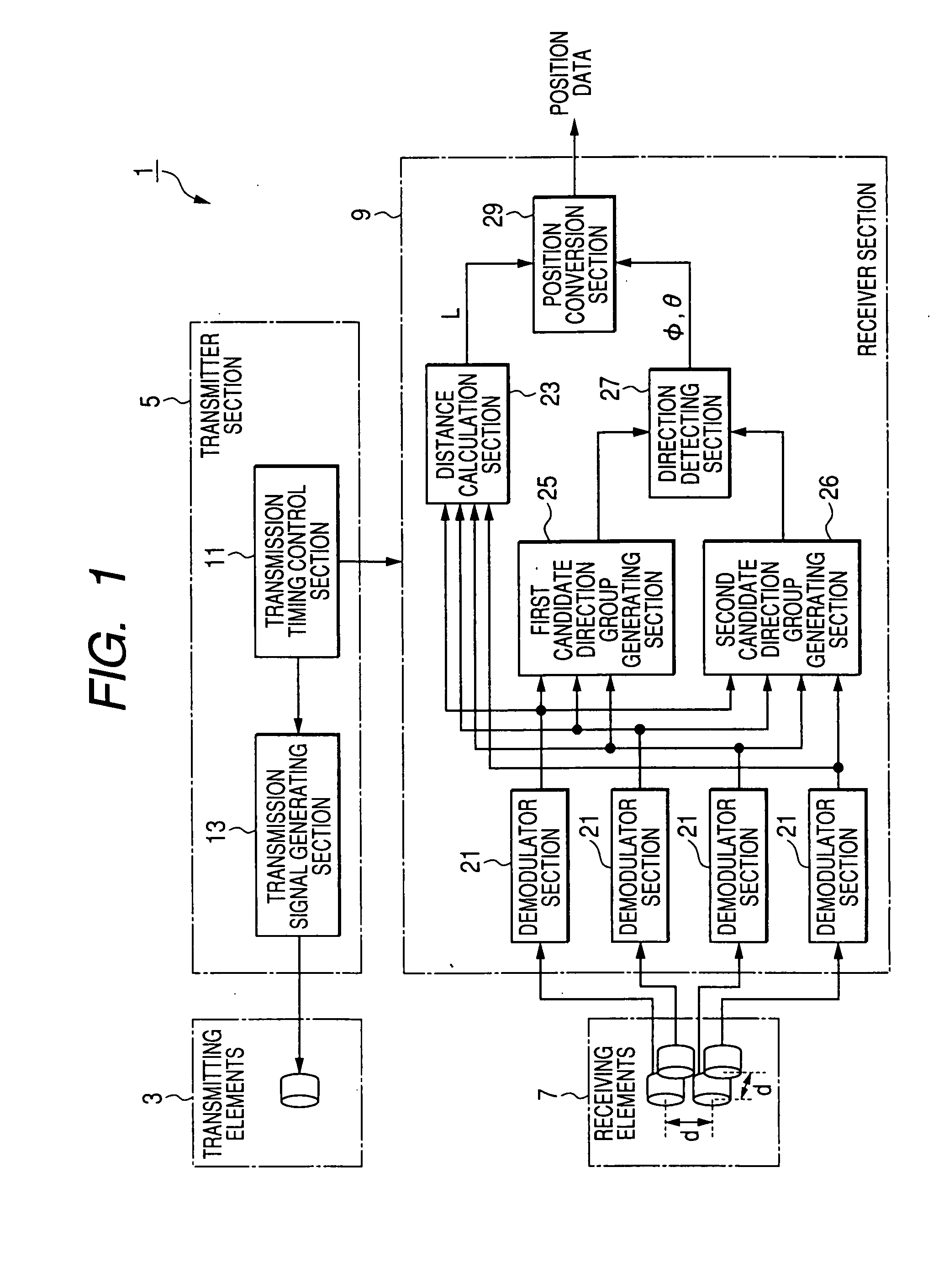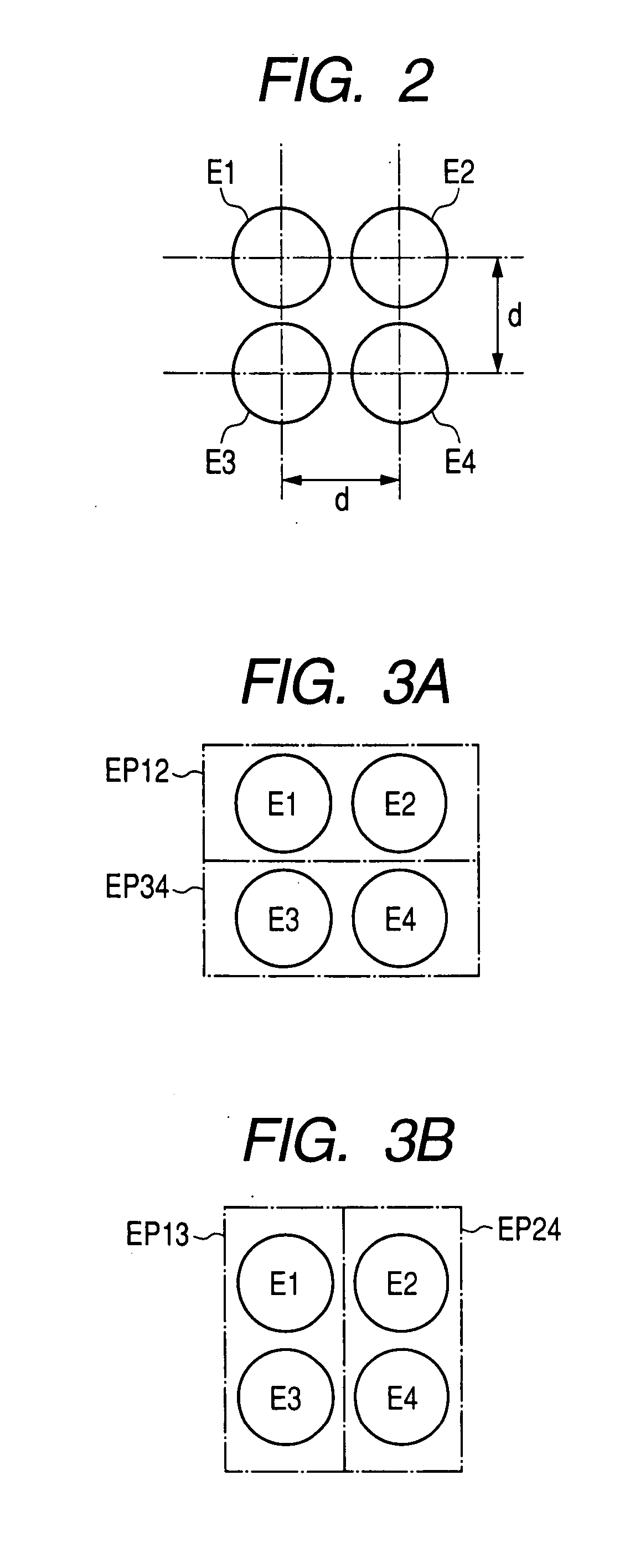Object direction detection method and apparatus for determining target object direction based on rectified wave phase information obtained from plurality of pairs of receiver elements
a receiver element and object direction technology, applied in the direction of reradiation, measurement devices, instruments, etc., can solve the problems of large apparatus size, difficulty in reducing the distance between adjacent receiver elements that is less than /2, etc., and achieve the effect of preventing the error of direction detection due to virtual images and large scal
- Summary
- Abstract
- Description
- Claims
- Application Information
AI Technical Summary
Benefits of technology
Problems solved by technology
Method used
Image
Examples
first embodiment
[0080]FIG. 1 is a block diagram showing the overall configuration of a first embodiment, which is an object detection apparatus 1. The object detection apparatus 1 transmits pulses of ultrasonic waves and receives resultant reflected ultrasonic wave pulses from an object to obtain received signals, and generates position data expressing the location of the object within three dimensions, based on the received signals.
[0081] In this type of the direction detecting apparatuses, an operating principle for detecting the target obstacle direction in which the target object is located uses so called the triangulation method schematically described in FIG. 23. In this triangulation method for detecting a target object located on a two-dimensional plane, a transmitting wave such as a radio wave, an ultrasonic wave, and the like is transmitted towards possible directions in which it is expected that the target object exists from the direction detecting apparatus. If the target object exists...
second embodiment
[0150] A second embodiment will be described in the following. This embodiment differs from the first embodiment only with respect to the configuration of a first candidate group generating section 25a which replaces the first candidate group generating section 25 of the first embodiment, so that the description will be centered on these points of difference from the first embodiment.
[0151]FIG. 8 is a block diagram of the second embodiment. As shown, the first candidate group generating section 25a includes a phase difference calculation section 31 which calculates the phase difference ΔΦ1,2 between the demodulated signals R1, R2, a phase difference calculation section 32 which calculates the phase difference ΔΦ3,4 between the demodulated signals R3, R4, a phase difference calculation section 33 which calculates the phase difference ΔΦ1,3 between the demodulated signals R1, R3, and a phase difference calculation section 34 which calculates the phase difference ΔΦ2,4 between the dem...
third embodiment
[0155] A third embodiment will be described in the following. This embodiment differs from the first embodiment only with respect to a part of the processing executed by the direction determining section 27, so that the description will be centered on these points of difference from the first embodiment.
[0156]FIG. 9 is a flow diagram of the processing executed by the direction determining section 27 of this embodiment. As shown in FIG. 9, by comparison with the first embodiment, S100 is omitted and S135 and S150 are added.
[0157] When processing is started, then firstly in S110, a plurality of candidate direction-pairs are derived. Each of these is a combination of one direction from the first candidate direction group and one direction from the second candidate direction group, i.e., with all of the possible different direction pairs being derived. The amount of difference in direction between the constituent directions in each of these candidate direction-pairs is then derived, f...
PUM
 Login to View More
Login to View More Abstract
Description
Claims
Application Information
 Login to View More
Login to View More - R&D
- Intellectual Property
- Life Sciences
- Materials
- Tech Scout
- Unparalleled Data Quality
- Higher Quality Content
- 60% Fewer Hallucinations
Browse by: Latest US Patents, China's latest patents, Technical Efficacy Thesaurus, Application Domain, Technology Topic, Popular Technical Reports.
© 2025 PatSnap. All rights reserved.Legal|Privacy policy|Modern Slavery Act Transparency Statement|Sitemap|About US| Contact US: help@patsnap.com



